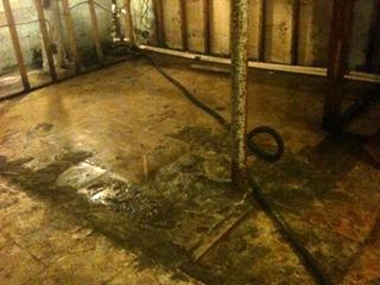Mold spores several inches in diameter cover the walls of homes in St. Albans. In Jamaica, hoses running from basements constantly drain the filthy water that has leaked inside.
The level of standing water underground in southeast Queens is rising and washing away the quality of life for many residents, damaging their homes and potentially their health, according to local politicians.
Assemblymember William Scarborough hosted a meeting to discuss the issue at The Robert Ross Johnson Family Life Corner in St. Albans on Thursday, November 10. Officials offered attendees the opportunity to submit a form describing the extent of damage done to their homes by rising water. Over 200 forms were collected.
“We’re seeking to motivate the community because this has got to be solved,” said Scarborough.
Rising water levels in southeast Queens have been a problem since 1996, when the area’s local water supplier, Jamaica Water Supply, was overtaken by the Department of Environmental Preservation (DEP). Southeast Queens was the last area of the city to be acquired by the DEP, the organization that provides water for all of New York City.
According to Scarborough, instead of taking water from one of the 69 previously present underground wells in the area, the DEP brought in water from other sources, causing the ground water level to rise. The standing water is now almost at surface level.
“The city had to know there would be a consequence,” said Scarborough.
About 10 years ago, the DEP realized there was widespread flooding.
The DEP then directed their attention to cleaning up the well at Station 24 in St. Albans, which became toxic due to chemical runoff from a dry cleaner across the street, as well as implementing new technology to pump and purify the water at Station 6, which was expected to deliver between six and 10 million gallons of water per day.
Scarborough alleges that without notice, the project was abandoned in 2005 because of the cost, and the water rose even further.
In a hearing with the City Council Environmental Protection Committee on September 24, 2007, Former DEP Commissioner Emily Lloyd testified that the water had risen over 30 feet between 1996 and 2007, Scarborough told The Courier.
“Our whole effort now is to get the DEP to provide a solution,” said Scarborough, who noted that he hopes the organization that was supposed to better the lives of residents in southeast Queens will return to finish the job it started.































